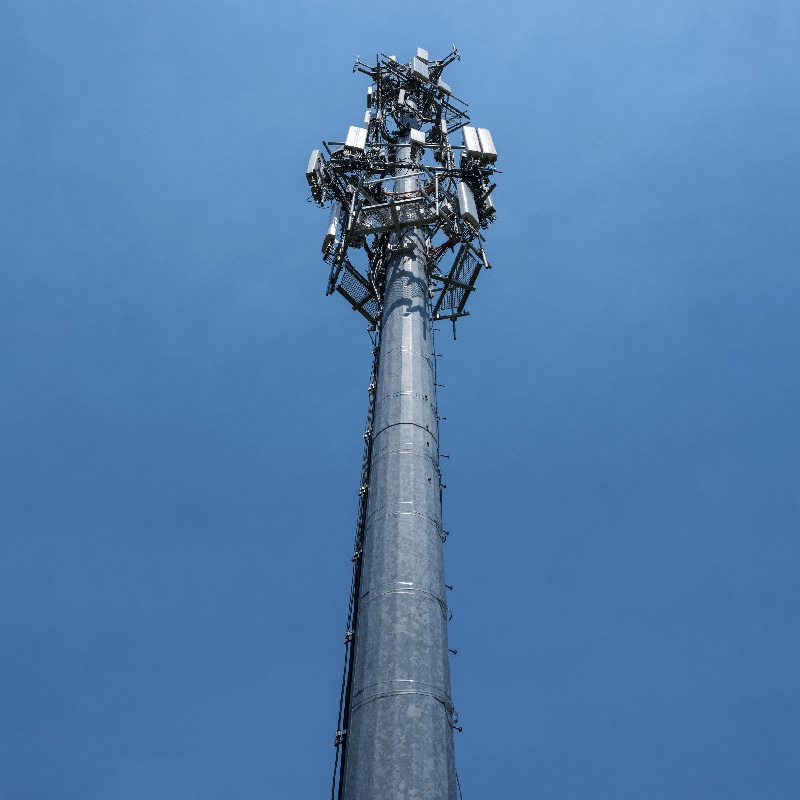NextWave returns with private wireless networking gambit in 2.5GHz
NextWave first gained widespread notoriety in the 1990s by bidding heavily in the FCC's PCS spectrum auction. Now it's back with a 2.5GHz private wireless network covering New York City.

NextWave is officially back. The company on Monday announced it is launching a 4G/5G private wireless network running in its 2.5GHz spectrum holdings across New York City. The network currently spans 138 cell sites and uses radios from vendor Airspan.
Figure 2:  NextWave's 2.5GHz network covers large portions of New York City, and the company hopes to dramatically expand its NYC coverage area early next year. Click here for a larger version of this image.
NextWave's 2.5GHz network covers large portions of New York City, and the company hopes to dramatically expand its NYC coverage area early next year. Click here for a larger version of this image.
(Source: NextWave. Used with permission.)
The launch represents "phase one" of NextWave's 2.5GHz network buildout plan. Early next year the company said it plans to expand its NYC network to fully cover 15 million people, via almost 50MHz of its 2.5GHz holdings, and will also build similar private wireless networks using 2.5GHz in San Francisco, Los Angeles and Philadelphia. The company also holds 2.5GHz spectrum licenses in other markets, including Las Vegas.
"While the private networking era is clearly here, industrial and enterprise users still must cope with both limited ecosystems and limited network coverage," said Frank Cassou, NextWave's CEO, in a release. As noted on his LinkedIn profile, Cassou was CEO of NextWave from 1996 to 2013. After that, he launched a company called Cyclopure involved in water filtration. He's still the CEO of that company, but in recent years he's also been working on getting NextWave's private wireless networking ambitions off the ground.
"The launch of NextWave's Band 41 (2.5 GHz) service in New York demonstrates the extraordinary value of using conventional wireless carrier spectrum for private network applications. Unlike other private networking options, the NextWave solution provides both wide-area coverage and the ability to utilize popular smartphones and other widely available mobile broadband devices," Cassou said.
Figure 1:  (Source: Phil Harvey/Alamy Stock Photo)
(Source: Phil Harvey/Alamy Stock Photo)
In its release, NextWave said its network in NYC is built on 5G small cells overlaid by a "dual 4G + 5G high-power wide-area network." The network will allow the company's private wireless customers to "maintain high levels of security and performance, even when they leave their facility," according to the company.
Blast from the past
NextWave's announcement marks a historic return by a company that first gained widespread notoriety in the 1990s by bidding heavily in the FCC's PCS spectrum auction. The company walked away with $4.2 billion worth of licenses in the auction, but it quickly fell into bankruptcy. After a protracted legal battle with the FCC, the company eventually sold much of its spectrum holdings to Verizon, AT&T, T-Mobile and others.
As noted by FierceWireless, NextWave used the funds from its spectrum sales to invest in a seemingly random string of businesses: WiMAX (via its acquisition of Cygnus), streaming multimedia (via its acquisition of PacketVideo), Wi-Fi (via its acquisition of Go Networks) and others. The company also continued to purchase spectrum licenses ranging from AWS to 2.5GHz. But the company has since sold most of those holdings.
According to John Dooley, a member of NextWave's board of directors, the company was unable to sell its 2.5GHz holdings. That's because such spectrum has long been considered mostly unusable. But he said that has changed following the massive success T-Mobile has had in building out its 5G network in 2.5GHz spectrum.
"We have this huge addressable ecosystem," Dooley said, noting that most modern smartphones now support the band. "It really is the golden age of 2.5GHz."
Last year, NextWave announced it scored a $200 million loan from Canyon Partners. At the time, Solus Alternative Asset Management and Avenue Capital Group were named as NextWave's main owners.
But why keep the name "NextWave" when it has such a long and tortured history? Other telecom companies, ranging from Lumen to Ligado, have shed their old branding in order to mark a fresh corporate start.
"I think it is a nice homage to the original teams that started the company and a good way to give it the life it always deserved," Dooley explained of the company's NextWave name.
Yet another private wireless network
To be clear, NextWave is jumping into a space packed with competitors. Vendors like Ericsson and Nokia, operators like Verizon and Dish Network, startups like Celona and Ligado and hyperscalers like Google and Amazon are just a few of the companies that have announced major investments into the private wireless networking space. Indeed, NextWave isn't the only company operating a network exclusively for private wireless networking customers: Infrastructure Networks is already doing that across vast portions of US oilfields.
Dooley said NextWave plans to use its NYC network to "host a number of applications for tech, which are not compatible with traditional network splicing." He said the company expects to begin discussing its potential customers later this year.
Interestingly, he also said the company's network uses "conventional RAN architecture." That's noteworthy considering that open RAN has been a hot topic among private wireless networking aspirants, particularly Dish Network. They generally argue that open RAN – which promises to separate networking components via open interfaces – can support a wide array of features and services.
Related posts:
— Mike Dano, Editorial Director, 5G & Mobile Strategies, Light Reading | @mikeddano
About the Author(s)
You May Also Like












